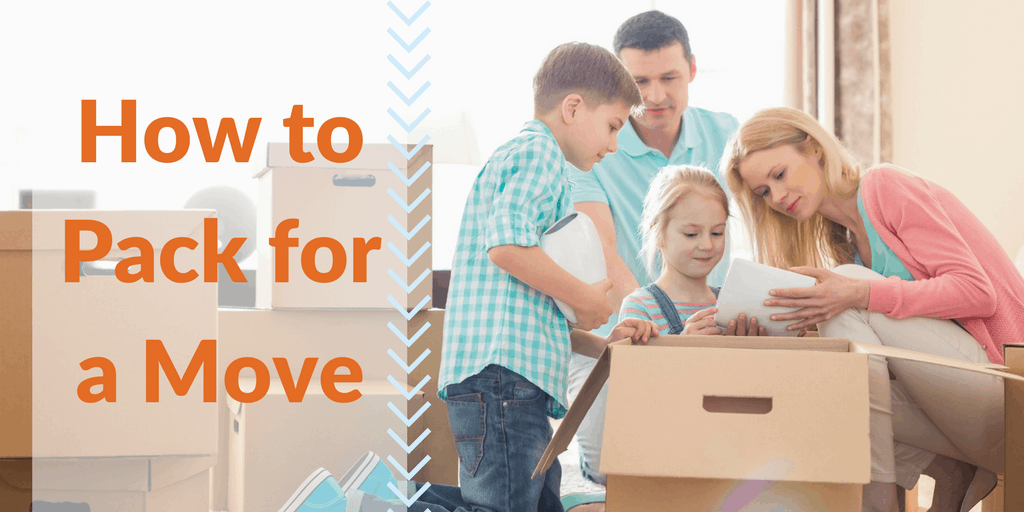How to Pack for a Move
February 3, 2017
If you don’t know how to pack for a move the process will likely involve swearing, crashing, broken items and possibly bones. Have you ever noticed that there are little tips and tricks in nearly every field that can make life easier? You spend 30 seconds clicking File > Print, selecting your printer, making sure the settings are right and then clicking print. Your IT guy hits CTRL+P and then Enter and is done in a fraction of the time.
These same principles apply to packing and moving as well. Check out a few of our favorite hints below and let us know if they make your move easier!
Step 1 – Don’t be a Featured Story on “Hoarders”
Clean and sort everything before packing. A good rule of thumb is if you haven’t used something in a year, recycle it or donate it to charity. Remember, anything you get rid of is something you don’t have to pack, transport and unpack. Moving to a new home is a fresh start. Clear the clutter now. Why waste time and energy deciding if you should put those hideous cat figurines your mother gave you on the mantle?
Step 2 – Gentlemen (and Ladies), Start Your Sharpies
Mark each box clearly on all sides with:
- What’s inside the box (be as detailed as possible: “Plates and Flatware” is much better than “Kitchen Stuff”).
- Which room the box goes in (“Susan’s Room”).
- How soon the box needs to be opened and unpacked. (Essential items like drinking glasses and bathroom toiletries should be unpacked ASAP – artwork and decorations can wait).
Step 3 – Pack With a Plan
Mark the boxes you know you will need first with an asterisk (*) or other meaningful symbol. Toilet paper, drinking glasses and towels apply here! Make sure the items you will need right away are easily accessible in a suitcase or clothes hamper. After a long day you’ll probably want a change of clothes and your toiletries handy.
Step 4 – Heaviest Goes First; Make Some Room
As you move around your home preparing to pack, start with the heaviest items first. They will form the base of your “packed boxes to move” area. If you don’t know where to start, books are usually the best items to begin with. Use appropriate sized boxes to group similar types of items together.
You’ll also want a designated room or corner of your house to serve as the packing station. Layer boxes of assorted sizes so they’re ready to grab. Momentum is the key word. Keep a stash of thick sharpies, packing tape and materials like bubble wrap, popcorn or unprinted newspaper there.
Step 5 – Opposites Attract… Somewhat
Many DIY movers believe a large box is suitable for heavy belongings, but in fact, the opposite is true. Large boxes should consist of light items. Heavy items, like books, belong in smaller boxes. Don’t put 100 pounds worth of items in a large box. When it breaks (which it will), everything slows down dramatically.
Step 6 – Don’t Suffer at Sleep Time
Before loading your moving truck, place a clean set of sheets in the dressers for each bedroom. That way no matter what happens (delays, distractions, misplaced boxes), everyone will have easily accessible, fresh sheets to sleep on at the end of an exhausting moving day.
Step 7 – The Many Uses of Blankets and Towels
There’s no need to pack up your blankets and beach towels; use them as pads to help save time and money. Blankets can be wrapped and taped around artwork and lamp bases. Lampshades can be stacked, wrapped, and packed in one box to ensure they’ll arrive intact.
Step 8 – Fawn Over Your Flora
Prune and repot houseplants about two weeks before you move to make sure they are as healthy as possible. Moving is surprisingly stressful on plants. About two days before you move, use a gentle household insecticide on your plants to ensure you aren’t transporting any nasty stowaways to your new home.
Step 9 – Laziness is Sometimes a Virtue (Shhh… Don’t Tell Mom!)
Chances are, you know somebody who has moved and left the fitted sheets on their mattresses. Why? Because it’s a big pain to put them back on! Experience has shown that leaving the fitted sheets on your mattresses while moving them can seriously impact – in a good way – how clean and tear-free they are upon arrival to your new home! That said, removing and washing said fitted sheet before you use it is probably a good thing to do.
If you have clothes on hangers already, leave them! Keep the clothes lying flat in the back of your car and you can simply hang them back up in your new closet.
Don’t feel like emptying out your dresser drawers and chests before the move? Then don’t! Clearing these items out adds to packing time and wastes useable truck space. If dressers are full, leave them! If you have any empty chests or drawers, fill them with linens. You will experience less load shift. Suitcases should also be packed in order to save truck space and money on boxes.
Step 10 – Take a Picture if You Like it So Much
Valuable jewelry and the like is usually secured and mixed in with less valuable items to keep it disguised. Take a photo inventory of your belongings, especially those you treasure most and back it up electronically off-site. You may also wish to do a video walk-through of the house and explain the value of other important items. If you forget where something was packed or you suspect it was lost, stolen or otherwise damaged, you have evidence of where and how it was packed and placed.
Simple Moving Labor hopes that you are now somewhat of a sensei on how to pack for a move. Whether you just need a little help lifting items out of your rental truck, or full service, we have the crews, experience and know-how to make your transition simple. If you have any tips on how to pack faster, smarter and cheaper please contribute your wisdom below!











We Aim For 5 Star Service